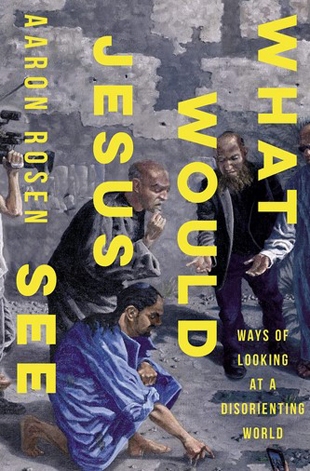Aaron Rosen is a curator of the visual arts and a scholar who earned a PhD from Cambridge University. He is director of the Henry Luce III Center for the Arts and Religion at Wesley Theological Seminary in Washington, DC. He’s also the visual arts editor at Image Journal. Rosen is trained to see.
He is also Jewish and married to an Episcopal priest and theologian. This is relevant information for understanding this insightful book. It is a distinctive perspective on what Jesus might see if Jesus were to return to the cities, suburbs, and small towns of a country like ours.
“What would Jesus see?” Rosen asks in the title and again and again, looking around the world we share together.
He takes an approach that focuses on empathy (and our relative lack of it today). He says, “At the core of his short ministry was a recurring call to look at the world — and especially its most disadvantaged denizens — with new eyes.” And, “Few people in the history of the world have understood as clearly and intuitively as Jesus that the way we look at people is intimately entwined with how we treat them.”
Rosen often relates this quest to his own life and experiences. For example, he explains that he used to focus on looking at Jesus — whereas now he is focusing attention on looking with Jesus.
After an initial chapter about seeing, vision, and vantage points for looking (full of excellent advice from a professor of the visual arts), Rosen turns to topics that summarize the vision of Jesus: Paying Attention (chapter 2), Discerning Truth (chapter 3), and Recognizing Others (chapter 4).
Frequently, Jesus is seen as one who would have trouble recognizing the movement that he started. “We are hypocrites in a way Jesus could scarcely have imagined,” writes Rosen at one point.
See the excerpt accompanying this review for a powerful anecdote from the final chapter reflecting one way Aaron Rosen learned to see the pain of others, to learn empathy, and then show mercy.
